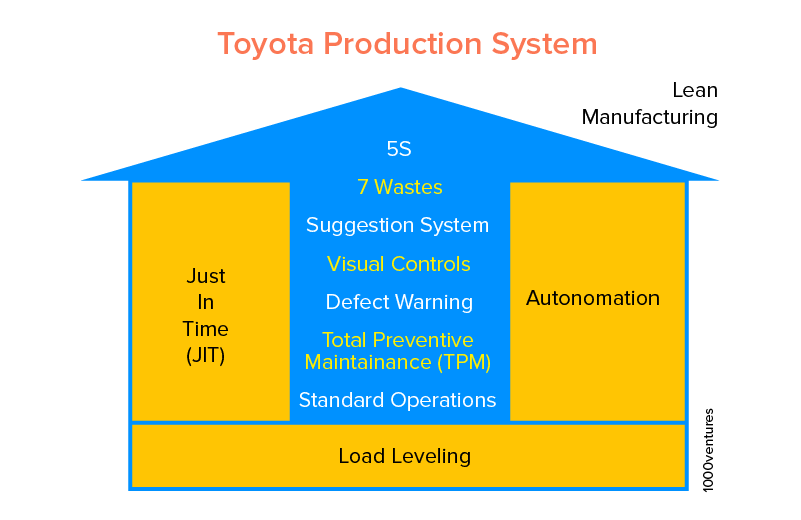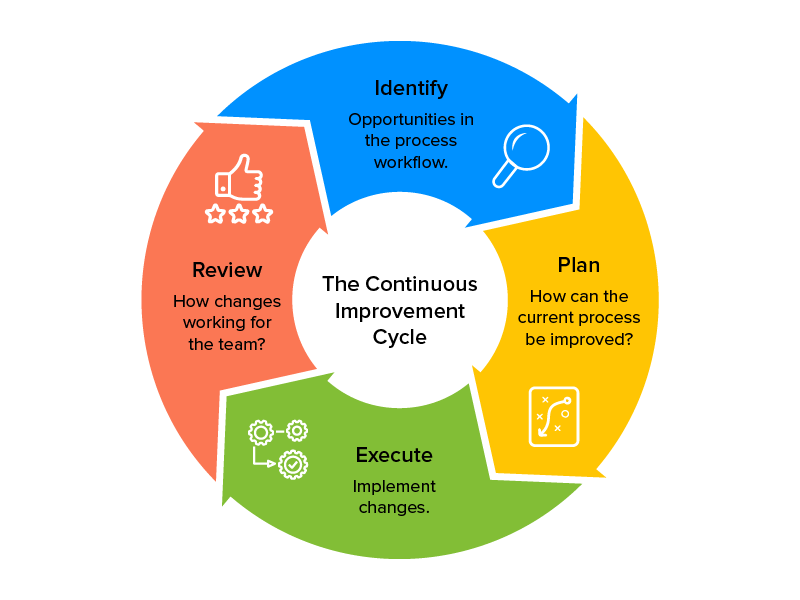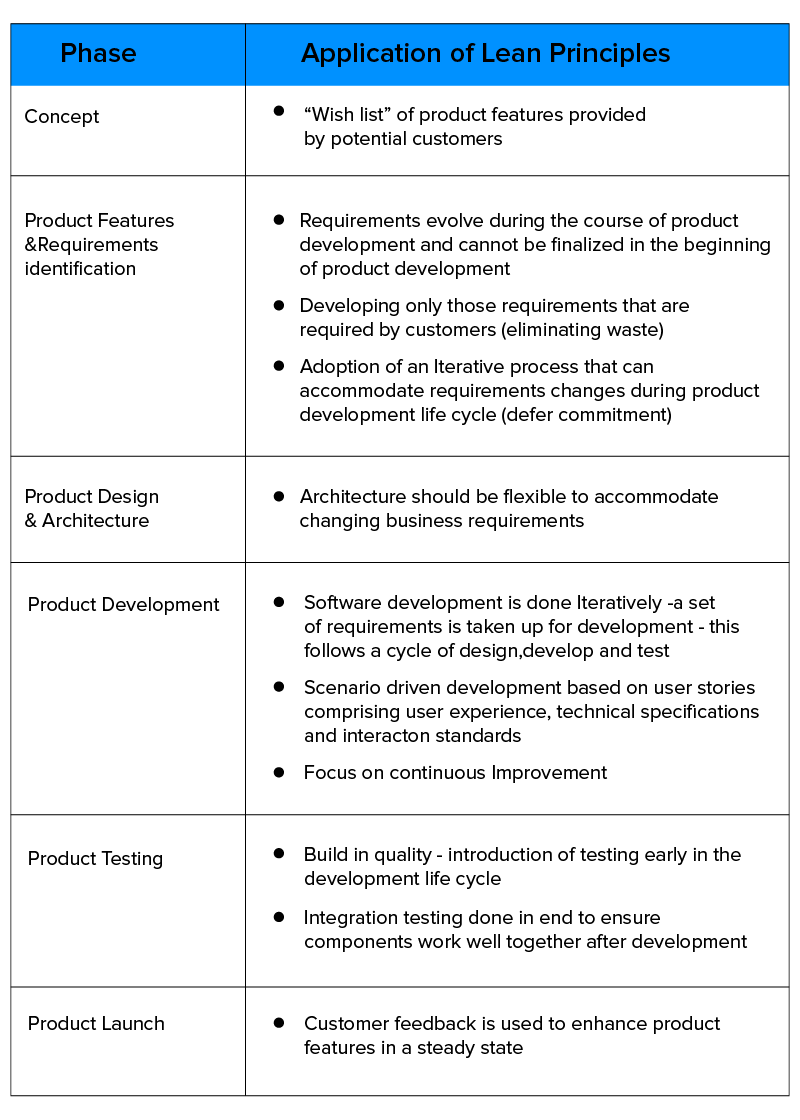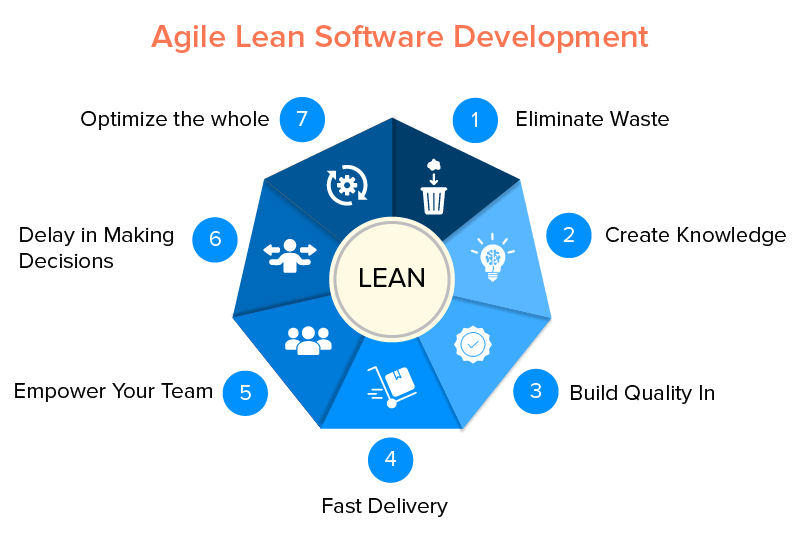How We Align Lean Principles in Our Software Development Process
The first time I heard of lean manufacturing was in the context of Toyota in my business operation class. Everyone, like me, who read into lean principle, was completely fascinated by the concept of reducing waste and increasing productivity through an intentional design.
Over time, the lean manufacturing method worked and the lean principles of product development flow was adopted by a number of industries, even outside manufacturing, which included software development.
Now, there is focus on product backlog, product roadmap,and how to judiciously use it while developing.
Lean development principle is an agile approach which was developed on lean manufacturing principles. The same, that is being used by Toyota as a lean development methodology for managing and optimizing the process of vehicle production for minimizing waste and increasing customer value.

I know what you must be thinking. If the lean principles originated around vehicle manufacturing, how does software development fit in?
The connection between lean agile methodology and software development was first introduced in 2003 in a book named “Lean Software Development: An Agile Toolkit” by Tom and Mary Poppendieck.
In the book, Poppendiecks interpreted how the lean principles could be applied into the software development process. Both software development and manufacturing processes follow repeatable structures and rely on high quality standards. They also depend heavily on teamwork to get things done.
The question, however, is how it can be done. In this article, we are going to look into how we align our software development process with lean software principles.
Table Of Content
- What are the Strengths and Weakness of Lean Agile Software Development?
- The 7 Principles Of Lean Software Development
- Tools Used in Software Development Process
- Aligning The 7 Lean Principles Into Our Software Development Projects:
- Phase Wise Application of the 2 Principles
- Overcoming The Challenges of Using Lean Principles
- Conclusion
If you still are not sure about what are the lean principles in the software development process, then let me help you out with the meaning. Lean software development is a collection of principles that is used for software development to reduce the programming effort. Lean principles got their start in manufacturing, as a way to optimize the production line to minimize waste and maximize value to the customer.
- Repeatable processes
- Team collaboration
- Uniform standards
What are the Strengths and Weakness of Lean Agile Software Development?
The strengths of lean product development principles include:
- A streamlined approach allowing functionalities to be delivered in limited time
- Elimination of unnecessary activities which can lower the cost
- Empowerment of the development team, helping them make decisions that can boost their morale.
- Flexibility of the project to frequently adapt the project and customize it according to the customer’s requirement.
The weaknesses of lean software development methodology include:
- It depends greatly on the involved team, making it less scalable compared to other frameworks
- It relies on stringent documentation. Failure on this part can lead to heavy development mistakes.
- Planning is necessary before the project is started. Before kicking off the project, you should be aware of the project vision, roadmap, release plan, and iteration plan.
- Professional teams are required to maintain workflow coordination and make quick decisions while working.
The 7 Principles Of Lean Software Development
There are seven key principles of lean software development approach working with the aim of fastening delivery and bringing high value to the end-users:
- Eliminate Waste
- Create Knowledge
- Build Quality In
- Fast Delivery
- Empower Your Team
- Delay in Making Decisions
- Optimize the whole
To fulfill these objectives cum principles, we make use of tools such as:
Tools Used in Software Development Process
5s System – It is designed to improve efficiency and productivity through a systematic approach and following its five S’s that stands for- Sort, Set, Shine, Standardize, and Sustain.
Inventory management – We follow the practice where we lower the number of operations that are in progress in one go through the application of theory or constraints or queuing theory.
Kaizen – This lean development tool helps in promoting improvement in quality, technology, processes, productivity, and safety. It is mostly helpful in developing a safe and tech culture.
Kanban – It is a pull project management system, where we limit tasks that are getting completed simultaneously. This helps us in preventing the overload of the development process.
Value stream mapping – It is a visualization method, where we visualize the development cycle – from client request to deployment. This helps us in demonstrating and helping optimize the time spent on holding and on actual processing.
Let us now look at how we align the seven principles of lean manufacturing with our software development cycle in our role as a leading lean software development company.
Aligning The 7 Lean Principles Into Our Software Development Projects:
1. Eliminate Waste
The foremost principle of lean product development that we adopt is elimination of everything which does not bring any value to the end-users. We start by identifying value of the product we have to build.
It makes it easy to identify the waste like unnecessary code, unclear goals, additional features, and extra processes, etc.
Wastes is one of the biggest digital transformation challenges. In our experience, can be found in a number of domains:
- Waste of work-in-progress i.e. the partial work. This can be lowered by putting limitations in work-in-progress, through the mode of Kanban.
- Waste of overproduction waste. These emerge when the feedback cycles get too lengthy and a series of extra features are demanded.
- Processes waste. These are eliminated by our custom software development company through pair programming approaches and better collaborations.
- Handsoff waste. We solve the issue by not keeping our team functioning as silos. We work as a close knit cross-functioning team which helps in enhancing efficiency.
- Software defects. Waste tends to seep in when the quality is not made a part of the software development firm process with different balance and checks.
2. Create Knowledge
Software development process, in itself, is one that is heavily knowledge generating one. Appinventiv from the beginning has been an extremely knowledge focused company. This is one of the main reasons how we have been able to incorporate blockchain and AI technology in the projects before any other software application development company in the industry.
We align the principle with our development process by implementing some key methods like: code reviews, performing training, code comments, project documentation, pair programming, and sharing sessions, etc.
3. Build Quality In
Our software development team ensures that the focus is always on delivering high quality products. We always keep enhancing our development process to eliminate the project from the first step to the end product.
There are various lean agile software development approaches that we apply to better the product quality:
- Pair programming – to lower the miscommunication waste and maximum output.
- Testing criteria – offering the engineers a system ensuring that it meets the requirement.
- Incremental development – bettering the quality through timely, consistent feedback.
- Lesser wait states – to protect the quality and streamline efficiency while lowering the gap in knowledge.
- Automation – using assets like AI and machine learning to lower and eventually eliminate the errors in development processes.
4. Fast Delivery
The agile development basics focuses heavily on the fast delivery of software processes. Lean agile principles, being a part of the approach also put focus on fast delivery. It simply means that the project team would have to deliver the modules according to the milestone plans.
Achieving fast app development time becomes easier when there is a stable workflow that helps teams in understanding the value of the process and thus facilitate fast results.
[Further Read: How Long Does it Take to Build a Mobile App?]
5. Empower Your Team
This one lean principle is what we follow regardless of the team and project. Our team that focuses on software development for startups understands that when you work together you have to respect each other. And when things go south or not according to plan, the focus should be kept on checking for gaps in the work process that might have led to conflicts and challenges.
Ever since our inception, we have been focusing on the creation of a favorable work environment where we lead by example. To better the morale, we also enable creative freedom to our teams giving them the choice to identify the best approach for any task.
6. Delay in Making Decisions
We know what you are thinking – delay in decision making has to be a bad idea.
But when we follow the lean agile principles, we believe that deciding late is not equal to becoming irresponsible. In fact, it encourages the team to keep their options open for a long period of time so that they can gather data which can help in taking important decisions.
The result of this is that our project never suffers from negative impacts which emerges because of bad decision making.
7. Optimize the Whole

We go for the optimization of the complete development process, which is not just limited to the sub-processes. We work with the understanding that if we add value to a specific set of processes, the end product will end up getting affected, and the end-results would be sub-optimized.
To handle sub-optimization, we encourage operating with good work capacities. We optimize the entire process which enables identification of value flows for the entire team that, in turn, promises valuable and timely delivery.
Phase Wise Application of the 2 Principles

Overcoming The Challenges of Using Lean Principles
Although the article, up until this point, has been inclined towards how lean software methodology makes it beneficial for a smooth software development process, there are some challenges that are prevalent which have to be solved.
- The team members have to be self-directed and be able to work as a cohesive unit.
- There can be instances where the requirements might keep increasing without a finalization in sight. These have to be managed with delicacy upon talking to the clients.
- Lean method is heavily focused on continuous improvement. The timelines for implementations are also generally long. This, in turn, can increase the timeline when you are able to reap the benefits.
Conclusion
Since lean agile methodology presents a customer oriented, adaptable, and flexible system, there is no hard and fast rule to follow the procedures or methodologies. But one can always take note of the given information so that there is no problem while developing a software.
It is always advisable to search for an expert, (who are focused on improving and enhancing their skills) while employing a team to build your application. The best way to do that is to either partner with software developers that are well-adapted with the technology and client’s needs, or you can opt for top companies in your area like top software development companies in USA or software development company in California, if you live in the US. But make sure you choose the best to get quality results.

strategies your digital product..




